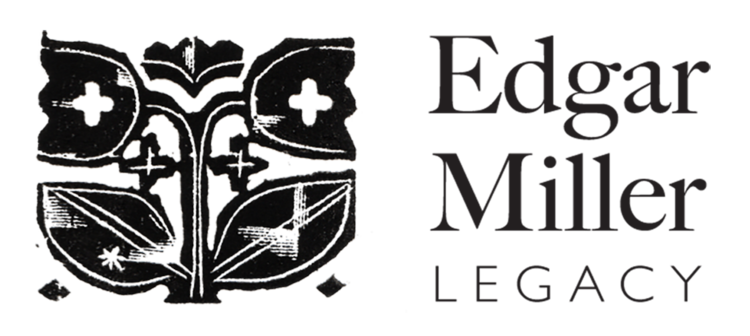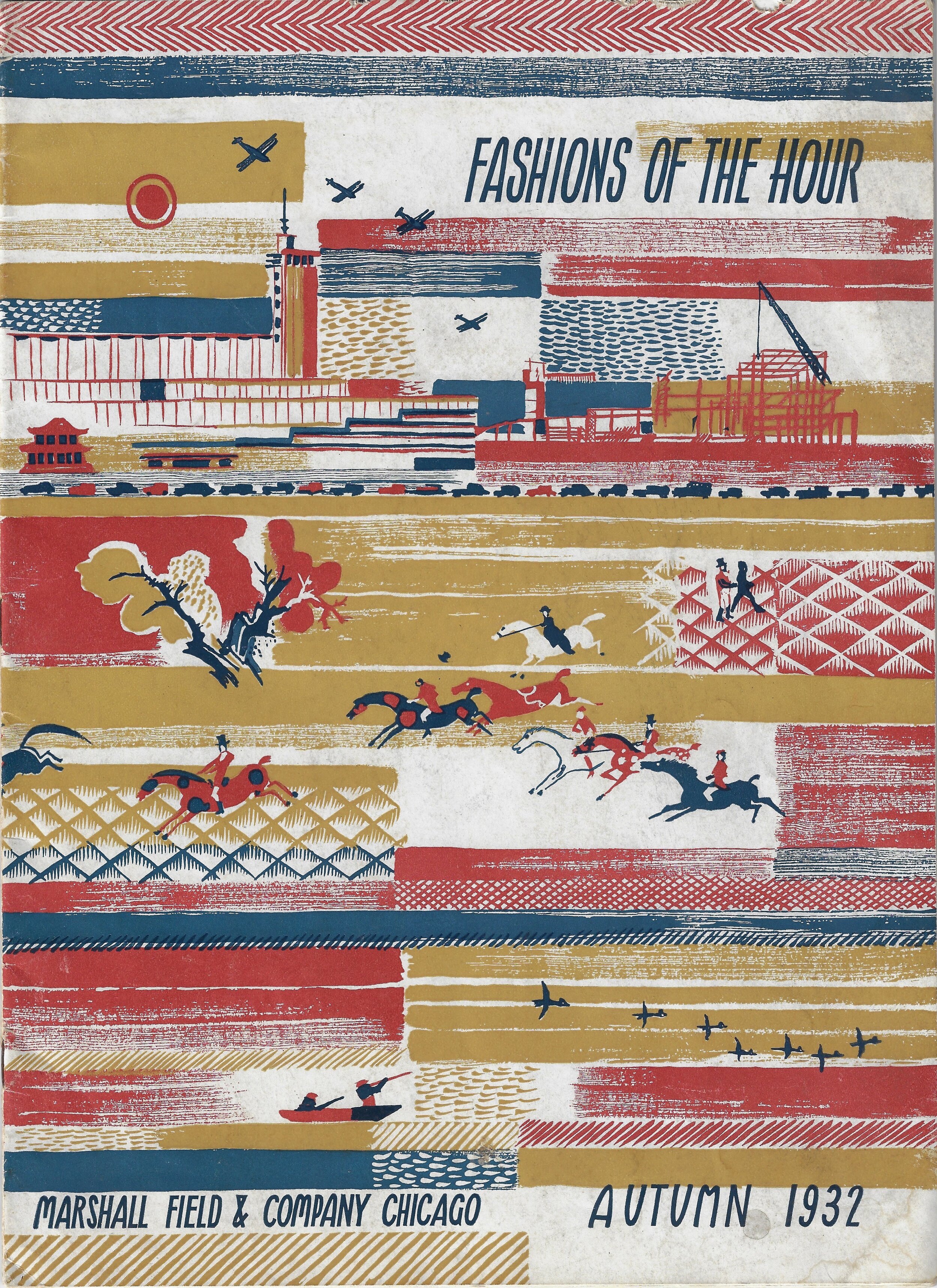Magazines & Catalogs
Major Chicago companies took notice of Edgar Miller’s rising star as a graphic designer through the 1920s. The renowned department store, Marshall Field & Company, was but one of several retail companies that began to hire modernizing graphic designers to update their marketing presence across a wide array of visual media channels. From their ornately designed window displays, to the fine art gallery in its State Street store, to the Tiffany decorated ceilings, the retail giant was well known as a site for eye-catching design. One of the most popular vehicles for this artistic advertising was the pages of their in-house magazine, Fashions of the Hour, which used eye-popping artwork and graphic design to inform their customers about the latest and most stylish fashion trends of the “Roaring Twenties”.
Marshall Field's hired numerous local artists and graphic designers to make covers and interior designs for their catalogue magazine publications from the 1910s onward. Edgar Miller was one such designer, who in total illustrated a half dozen covers for the company’s iconic magazine, and who was also hired to produce all kinds of paper products for the store, like their holiday gift wrap and boxes. Always creating from an artisan’s perspective, Miller illustrated in his trademark freehand style, which gave his work a bespoke feel that set his style apart from many of the other graphic designers at the time.
Much like the Fashions of the Hour magazine itself, Miller felt free to showcase a wide range of ever-changing aesthetic trends: from storybook-style folk art to sophisticated modernist design, he maintained a quintessential handcrafted style throughout. He also produced numerous ads, banners, and other internal details within the magazine and for local newspapers in which Marshall Field’s would advertise.
The covers Miller designed are some of the best examples of the artist’s colorful, bold, and detailed graphic artwork that was clearly influenced by painterly techniques of the Expressionist movement. Today, we can more easily see how this avant-garde aesthetic had, by the early 1930s, blossomed from a style referencing modern art into a fully-formed aesthetic of its own.
Magazines & Catalogs
Click on an item to learn more. Hover over the image to learn more. Or click the small white circle at the bottom right of the image popup to view a brief description. You can also swipe through the images once they appear on your screen.









